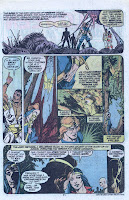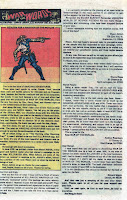Book Review: 'Alternities' by Michael Kube-McDowell
3 / 5 Stars
When Endicott finally reaches a closed door, opens it, and steps through, he finds himself in an abandoned hotel. Emerging into the street outside, he is astonished to discover he is in Boston, outside the Cambridge Hotel. But even though it’s August 22, 1966, it’s not his Boston…..for the copy of the Globe in the corner newspaper vending box has the Cleveland Indians beating the New York Yankees in a game that, in Endicott's Boston, has yet to be played…..
Not one to pass up a chance for personal gain, Endicott decides to take up residence in this ‘alternity’, a parallel world where the people and places may have the same names, but history has taken a slightly different course. Using his knowledge of the existence of the wormhole that leads to at least six other ‘alternities’, Endicott is able to place himself in power in the political structure of what has become the ‘Home Alternity’.
It’s now the Fall of 1976, and President Peter Robinson confronts an aggressive Soviet Union, a Soviet Union with greater military, economic, and political power than his United States can muster. The technological secrets plundered from the other alternities by teams of ‘moles’ and ‘runners’ are helping the US gain on the Soviets, but not fast enough to suit Robinson. But with the closely-held knowledge that he and his aides can escape to another existence in a parallel world, a kind of 'ultimate' fallout shelter, he realizes he may not have to wait decades for ascendancy over the hated enemy.
Robinson embarks on a campaign of covert military action against the Soviet Bloc, aware that if things lead to a nuclear war, the rest of the country can burn while he and his cronies escape to start over in a different universe……..
I picked up ‘Alternities’ (Ace Books, 383 pp.) back when it first was published in October 1988, but gave up after the first 75 pages, bored by its deliberate pacing. I recently decided to give it another try and did indeed finish it.
The narrative revolves around three major characters: the cunning and amoral Senator Endicott; the megalomaniacal President Peter Robinson; and Rayne Wallace, a ‘runner’ who travels the maze between worlds, retrieving goods and information from teams covertly operating in the unsuspecting host alternities.
This novel is not so much an SF work as it is a political thriller, one with a deliberately darker and more cynical take on Cold War conflicts than the Tom Clancy novels of the 1980s, such as ‘’Red Storm Rising’. The presence of the alternities is used not so much to expound on deep themes of physics or cosmology, but mainly as a plot a device by which author Kube-McDowell can engage in ‘what if’ scenarios about US / Soviet brinksmanship. In this regard, the book works rather well.
Where ‘Alternities’ loses steam is in the chapters dealing with the adventures of Rayne Wallace, who uses his access to a given alternity - where he never existed - to befriend the doppelganger of a former girlfriend. These sections of the novel, as well as those dealing with Wallace’s strained marriage and family life in his Home alternity, tend to be steeped in emotionally burdened prose and can grow tiresome.
Overall, however, ‘Alternities’ remains a good alternate world novel, superior in many ways to the rote entries in this genre churned out by Harry Turtledove. While the plot at times tends to lose momentum over the span of the book’s 383 pages, the resolution of the crisis of the Alternities is ably handled by author Kube-McDowell. Readers interested in an alt-history tale that explores Cold War themes may want to give this novel a try.























































































